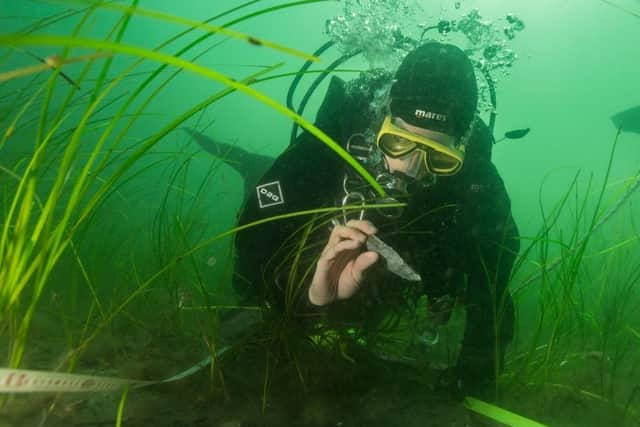Yorkshire researchers on hunt for lost civilisations that lie under the waves
The Last Ice Age ended around 10,000 years ago and sea levels began to rise swallowing great expanses of land, which people had lived on for thousands of years.
Now a specialised team of researchers from the University of Bradford is leading a pioneering search for evidence of human civilisation on ancient coastlines that are now lost to the waves.
Advertisement
Hide AdAdvertisement
Hide AdThe University of Bradford's Submerged Landscapes Research Centre (SLRC) recently won funding for two ground-breaking projects: Subnordica, a search for ancient human settlement sites in the North Sea and the Baltic, and the Life on the Edge Project, which takes the underwater search to the Adriatic.


Both projects will use state of the art technology, including semi-autonomous underwater drones and 3D seismic sensors to map ancient coastlines and search for evidence of human settlements.
The information may also provide important data related to climate change and how our ancient ancestors coped with rises in sea levels that make today's "climate change” predictions look insignificant.
Bradford’s SLRC, headed by Professor Vince Gaffney, was awarded just under £7m, the largest single grant ever given to the University towards the Subnordica project.
Advertisement
Hide AdAdvertisement
Hide AdThe University will work alongside three other institutions, Moesgaard Museum, Aarhus University and the German research institute NIHK, who bring their own expertise and experience.
Prof Gaffney said: “With progressive global warming and sea-level rise these unique landscapes, home to human societies for millennia, disappeared.
“We know almost nothing about the people who lived on these great plains.
"As Europe and the world approaches net zero, development of the coastal shelves is now a strategic priority. Subnordica will use the latest technologies to explore these lands and support sustainable development”.
Advertisement
Hide AdAdvertisement
Hide AdGeo-archaeologist Dr Simon Fitch from Bradford University has travelled to Croatia to map the seabed. It has long been known that people lived there as trawlers regularly dredge up finds.
He said “If we go back in time to the period known as the late Paleolithic - so, between 10,000 and 24,000 years ago - that is when we had the last ‘glacial maximum’.
"It’s when the ice age was at its peak. Sea levels were up to 100m lower than they are today. They would have been like that for thousands of years. It means a lot more land was exposed and people would have lived there. We know most human populations like to live on the coastline, so it’s likely there were settlements on what is now the seabed.
"Our aim is to find evidence of those settlements and then recover the archaeology."
Comment Guidelines
National World encourages reader discussion on our stories. User feedback, insights and back-and-forth exchanges add a rich layer of context to reporting. Please review our Community Guidelines before commenting.
